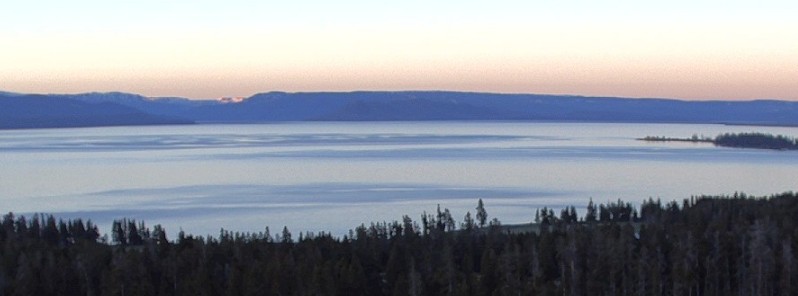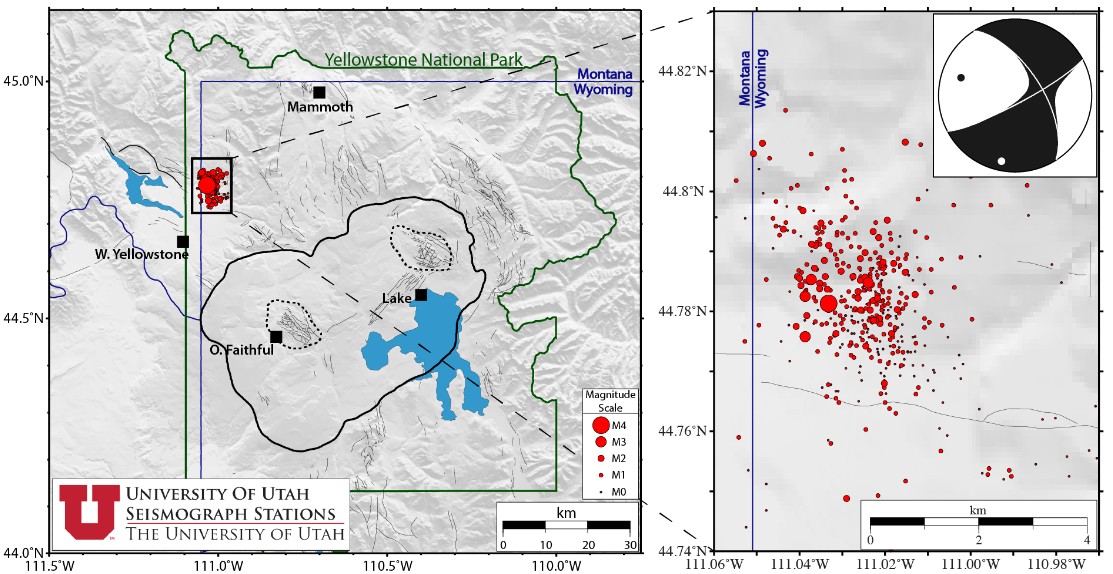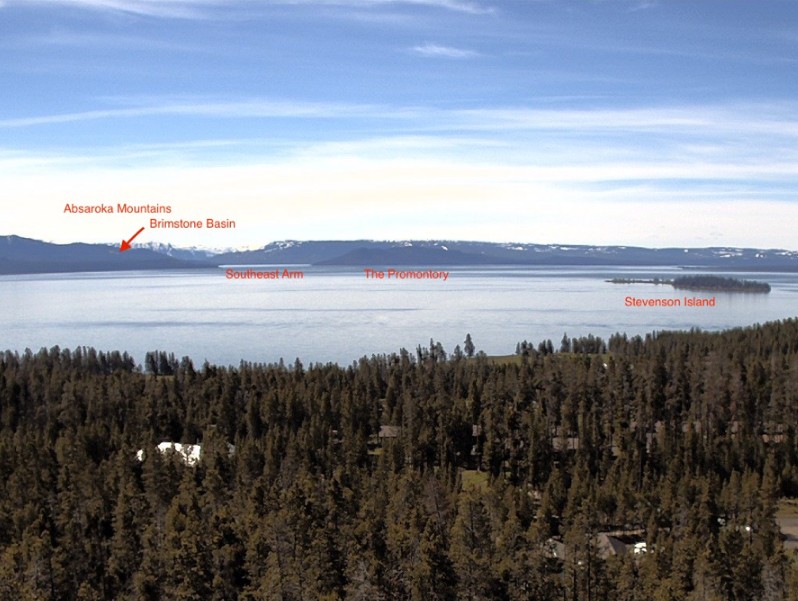Yellowstone earthquake swarm continues, causing panic

An energetic earthquake swarm that started on June 12, 2017 on the western edge of Yellowstone National Park continues, leading many people into panic mode. However, there is no indication that this supervolcano will experience a catastrophic eruption in the foreseeable future which makes panicking about it a perfect waste of time and energy. Earthquake swarms are common in Yellowstone and, on average, comprise about 50% of the total seismicity in the Yellowstone region.
The University of Utah Seismograph Stations (UUSS) is monitoring an earthquake swarm which is currently active on the western edge of Yellowstone National Park. The swarm began on June 12, 2017 and, as of 19:30 UTC on June 19 (13:30 MDT) is composed of 464 events with the largest magnitude of ML 4.4 (MW 4.4), UUSS said.

Credit: UUSS
The swarm consists of one earthquake in the magnitude 4 range, 5 earthquakes in the magnitude 3 range, 57 earthquakes in the magnitude 2 range, 238 earthquakes in the magnitude 1 range, 157 earthquakes in the magnitude 0 range, and 6 earthquakes with magnitudes of less than zero.
These events have depths from ~0.0 km to ~14.5 km (9 miles), relative to sea level. At the time of this report (21:09 UTC, June 19), there were 115 felt reports for the M4.4 event that occurred on June 16, 2017 at 00:48:46.94 UTC (June 15, 2017 at 18:48:46.94 MDT). The M4.4 event has an oblique strike-slip moment tensor solution.
Earthquake swarms are common in Yellowstone and, on average, comprise about 50% of the total seismicity in the Yellowstone region.
This is the highest number of earthquakes at Yellowstone within a single week in the past five years, but is fewer than weekly counts during similar earthquakes swarms in 2002, 2004, 2008 and 2010.
The Current Volcano Alert Level is Normal; Aviation Color Code is Green.
While there is currently no impending eruption of this volcano, we will almost certainly see some more activity before Yellowstone goes extinct.
“If you look at the whole trail of volcanoes that erupted prior to Yellowstone, along the Snake River Plain, they all end with basaltic lavas, similar to those we find in Hawaii. So we expect that as Yellowstone slows down, it will have similar basaltic eruptions. In other words, it’s not going to go extinct until it’s had another series of relatively non-explosive eruptions that represent the final stage of activity,” Jake Lowenstern, Scientist-in-Charge of the Yellowstone Volcano Observatory, said in a conversation with The Watchers back in 2014.
Another interesting news coming from YVO this week is the installation of a new webcam looking south-southeast over Yellowstone Lake from the cell phone tower near Fishing Bridge. The new camera was announced on June 19.

Credit: USGS/YVO
To access this and other Yellowstone webcams, visit YVO/Multimedia/Webcams
Geological summary
The Yellowstone Plateau volcanic field developed through three volcanic cycles spanning two million years that included some of the world's largest known eruptions. Eruption of the >2450 km3 Huckleberry Ridge Tuff about 2.1 million years ago created the more than 75-km-long (46 miles) Island Park caldera. The second cycle concluded with the eruption of the Mesa Falls Tuff around 1.3 million years ago, forming the 16-km-wide (9.9 miles) Henrys Fork caldera at the western end of the first caldera.
Activity subsequently shifted to the present Yellowstone Plateau and culminated 640 000 years ago with the eruption of the >1000 km3 Lava Creek Tuff and the formation of the present 45 x 85 km (28 x 52 miles) caldera. Resurgent doming subsequently occurred at both the NE and SW sides of the caldera and voluminous (1000 km3) intracaldera rhyolitic lava flows were erupted between 150 000 and 70 000 years ago. No magmatic eruptions have occurred since the late Pleistocene, but large hydrothermal eruptions took place near Yellowstone Lake during the Holocene. Yellowstone is presently the site of one of the world's largest hydrothermal systems including Earth's largest concentration of geysers.
Featured image credit: USGS/YVO

Unfortunately, these relatively benign swarms are so hyped up on certain websites that go way over the top, that some people living in the area aren’t sure what to think. I like that this site lays out the facts calmly. It’s refreshing.
Thank you
I live north shore of Lake Huron Canada. Would I mostly get dust. ??